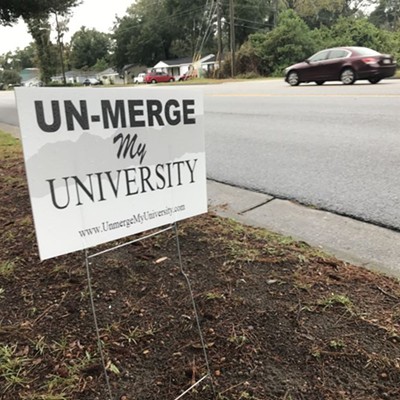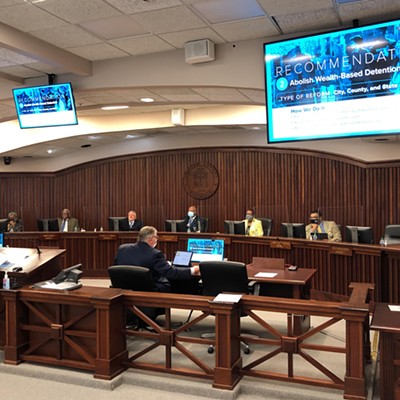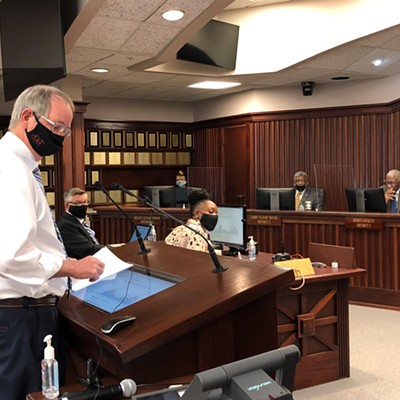Monday, November 23, 2015
Armstrong's Economic Monitor reports mostly positive news for third quarter
Armstrong State University’s latest Coastal Empire Economic Monitor reports mostly positive news, even as the Savannah-metro economy hit the pause button during the third quarter of 2015.
"Solid gains in total employment and consumer confidence were offset by dips in port activity, retail sales and air travel," says Allison Hersh, director of marketing and communications for Armstrong. "Electricity and hotel sales effectively were flat, along with the coincident index of economic activity for the region."
The Economic Monitor, which analyzes data and identifies trends affecting the regional economy, tracks key growth areas. The Coastal Empire coincident index remained level, after averaging a 1.3 percent annual pace for the previous three quarters. Growth in total employment provided most of the lift to the index while increases in consumer confidence across the region also played a supporting role.
However, seasonally adjusted retail sales did not rise with consumer confidence, falling roughly 10 percent from the previous quarter, and remain 4.7 percent below sales this time last year, after inflation adjustment.
“Jobs in the business and professional services sector continues to boom, adding another 500 during the quarter, which topped last year’s number by 15 percent,” said Michael Toma, Fuller E. Callaway Professor of Economics and the Director of Armstrong’s Center for Regional Analysis. “The continued momentum in this sector has vaulted it over total government employment into third place behind leisure and hospitality and education and health in terms of sector size. Increases in retail and local government have also contributed.”
In the housing market, building permit issuance for single-family homes has consistently remained robust, with 500 permits per quarter for three consecutive quarters. The seasonally adjusted number of new residential homes permitted for construction was 491, equal to the second quarter figure, and a slight dip from 493 in the first quarter.
Building permit issuance is up 11 percent from one year ago and has experienced the healthiest nine-month run since the first pre-recession quarters of 2007. During the previous two years, building permits for single-family homes have been issued with an average value of $202,500. In the third quarter of 2015 the number was $198,300, a 9.6 percent decline from the previous quarter of $219,400.
Additional highlights from the latest Economic Monitor include:
· The Coastal Empire leading economic index increased, but at a slightly slower pace than the second quarter. Favorable trends continued in the labor market, while housing held steady. Consumer expectations in the south Atlantic states declined substantially during the second quarter.
· Fourth quarter expectations are somewhat reduced from earlier projections, but regional economy is expected to close out the year on a modestly upbeat note. Economic growth is expected to continue through the first half of 2016, but modestly so.
· Seasonally adjusted employment in the three-county metro area increased 1,500 jobs to average 171,500 for the quarter. Throughout the year, employment growth trended down from four to three percent. However, in the Savannah area, employment growth remains well above the long-term average of 1.6 percent growth since 1990.
· Other service sectors remain positive. Retail employment increased by 400 workers and local government added 300 workers. In general, service sector employment increased 1,600 jobs and tourism employment was steady during the quarter.
· Port activity merits attention because of recently changing dynamics regarding east versus west coast trade. Labor strife in the west resulted in a diversion of cargo to the east coast. The norm of four-to-three market share in cargo trade for west versus east had fallen to be nearly even. However, a new labor pact was ratified by west coast labor unions in May and cargo trade is now beginning to return to previous patterns.
· In the labor market, seasonally adjusted initial claims for unemployment insurance (UI) fell 3.5 percent to 707 per month from 732 claims. The number of new UI claims was 8.6 percent below previous year data and is below the expected numbers, given the size of the workforce. With falling UI claims and steady job growth, the unemployment rate fell four-tenths of a percentage point to 5.4 percent (seasonally adjusted).
The Coastal Empire Economic Monitor presents quarterly economic trends and short-term economic forecasts for Savannah’s Metropolitan Statistical Area (MSA). The quarterly report measures the heartbeat of the local economy, based on the analysis of economic data from the U.S. Census Bureau, the U.S. Department of Labor’s Bureau of Labor Statistics, the City of Savannah, Georgia Power and the three counties in the MSA—Chatham, Bryan and Effingham.
The report presents a short-term forecast of the region’s economic activity in the next six to nine months and is available free by email. To subscribe, email [email protected].
Armstrong’s Center for Regional Analysis, housed in the university’s economics department, meets the applied research needs of Savannah's business and community organizations. Areas of concentrated research include regional economic forecasting, economic impact analysis, economic development and business expansion, tourism development, survey-based research and specialty reports on topics of state, regional and local interest.
"Solid gains in total employment and consumer confidence were offset by dips in port activity, retail sales and air travel," says Allison Hersh, director of marketing and communications for Armstrong. "Electricity and hotel sales effectively were flat, along with the coincident index of economic activity for the region."
The Economic Monitor, which analyzes data and identifies trends affecting the regional economy, tracks key growth areas. The Coastal Empire coincident index remained level, after averaging a 1.3 percent annual pace for the previous three quarters. Growth in total employment provided most of the lift to the index while increases in consumer confidence across the region also played a supporting role.
However, seasonally adjusted retail sales did not rise with consumer confidence, falling roughly 10 percent from the previous quarter, and remain 4.7 percent below sales this time last year, after inflation adjustment.
“Jobs in the business and professional services sector continues to boom, adding another 500 during the quarter, which topped last year’s number by 15 percent,” said Michael Toma, Fuller E. Callaway Professor of Economics and the Director of Armstrong’s Center for Regional Analysis. “The continued momentum in this sector has vaulted it over total government employment into third place behind leisure and hospitality and education and health in terms of sector size. Increases in retail and local government have also contributed.”
In the housing market, building permit issuance for single-family homes has consistently remained robust, with 500 permits per quarter for three consecutive quarters. The seasonally adjusted number of new residential homes permitted for construction was 491, equal to the second quarter figure, and a slight dip from 493 in the first quarter.
Building permit issuance is up 11 percent from one year ago and has experienced the healthiest nine-month run since the first pre-recession quarters of 2007. During the previous two years, building permits for single-family homes have been issued with an average value of $202,500. In the third quarter of 2015 the number was $198,300, a 9.6 percent decline from the previous quarter of $219,400.
Additional highlights from the latest Economic Monitor include:
· The Coastal Empire leading economic index increased, but at a slightly slower pace than the second quarter. Favorable trends continued in the labor market, while housing held steady. Consumer expectations in the south Atlantic states declined substantially during the second quarter.
· Fourth quarter expectations are somewhat reduced from earlier projections, but regional economy is expected to close out the year on a modestly upbeat note. Economic growth is expected to continue through the first half of 2016, but modestly so.
· Seasonally adjusted employment in the three-county metro area increased 1,500 jobs to average 171,500 for the quarter. Throughout the year, employment growth trended down from four to three percent. However, in the Savannah area, employment growth remains well above the long-term average of 1.6 percent growth since 1990.
· Other service sectors remain positive. Retail employment increased by 400 workers and local government added 300 workers. In general, service sector employment increased 1,600 jobs and tourism employment was steady during the quarter.
· Port activity merits attention because of recently changing dynamics regarding east versus west coast trade. Labor strife in the west resulted in a diversion of cargo to the east coast. The norm of four-to-three market share in cargo trade for west versus east had fallen to be nearly even. However, a new labor pact was ratified by west coast labor unions in May and cargo trade is now beginning to return to previous patterns.
· In the labor market, seasonally adjusted initial claims for unemployment insurance (UI) fell 3.5 percent to 707 per month from 732 claims. The number of new UI claims was 8.6 percent below previous year data and is below the expected numbers, given the size of the workforce. With falling UI claims and steady job growth, the unemployment rate fell four-tenths of a percentage point to 5.4 percent (seasonally adjusted).
The Coastal Empire Economic Monitor presents quarterly economic trends and short-term economic forecasts for Savannah’s Metropolitan Statistical Area (MSA). The quarterly report measures the heartbeat of the local economy, based on the analysis of economic data from the U.S. Census Bureau, the U.S. Department of Labor’s Bureau of Labor Statistics, the City of Savannah, Georgia Power and the three counties in the MSA—Chatham, Bryan and Effingham.
The report presents a short-term forecast of the region’s economic activity in the next six to nine months and is available free by email. To subscribe, email [email protected].
Armstrong’s Center for Regional Analysis, housed in the university’s economics department, meets the applied research needs of Savannah's business and community organizations. Areas of concentrated research include regional economic forecasting, economic impact analysis, economic development and business expansion, tourism development, survey-based research and specialty reports on topics of state, regional and local interest.
Tags: economy , armstrong state university


















